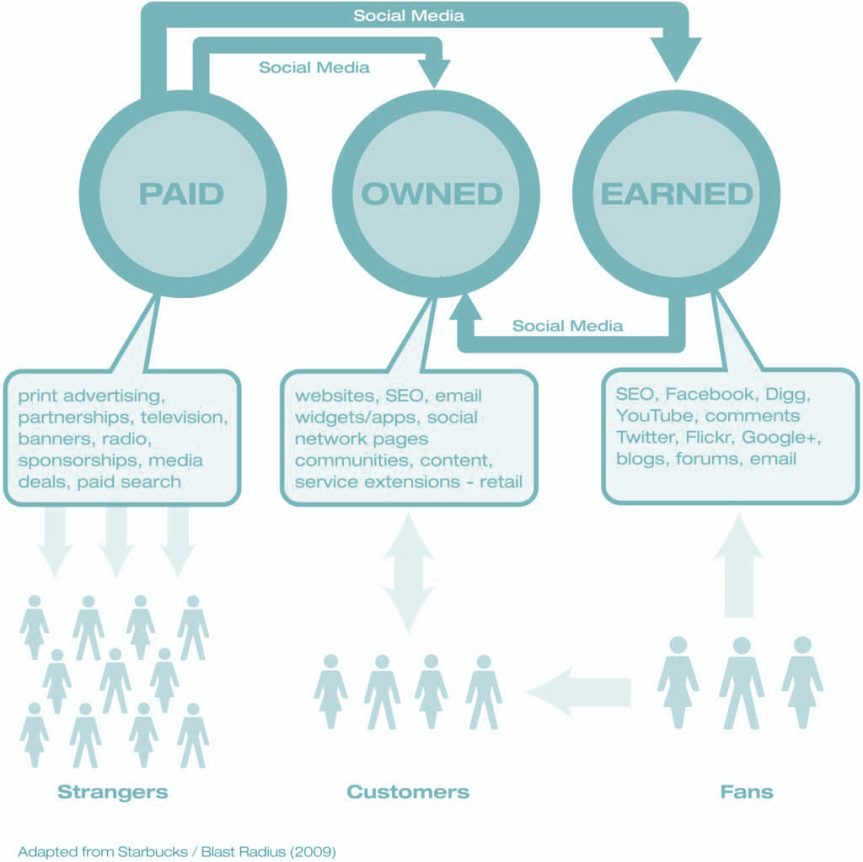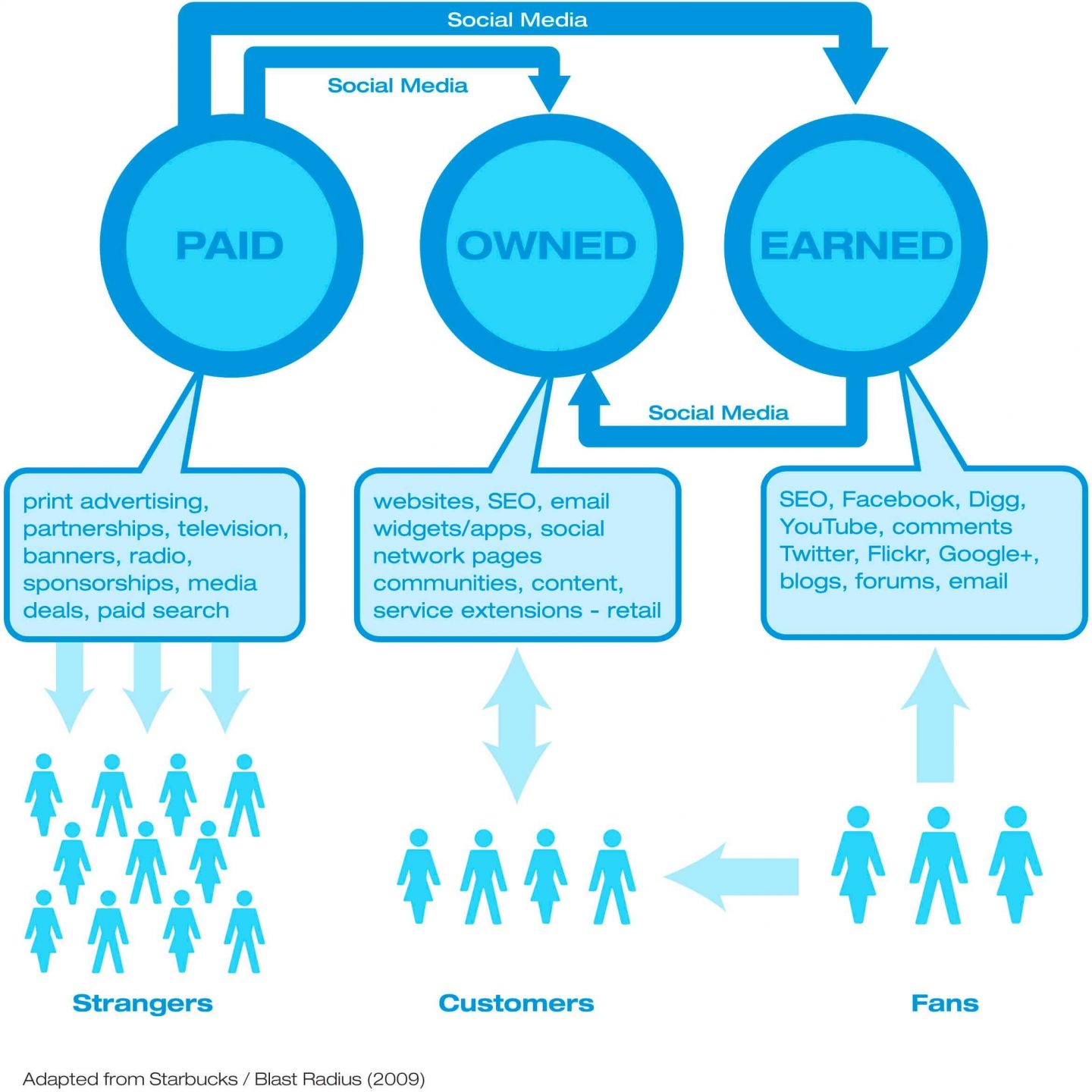Regardless of the marketing strategy that a company may have in place, there are key elements to buying digital media that all brands should take into account.
However, before jumping into the elements of successful digital media buying, there is one aspect that must be worked out: defining your campaign goals. One of the biggest mistakes marketers make with any marketing campaign is trying to manage to several goals at the same time.
 While it is true that all brands aim at varied objectives and want to solve different issues, you must learn to prioritize. The important thing is to maintain a hierarchy of objectives. If you have limited resources, as is often the case, it is essential to focus efforts on the main objective, and spare no effort in trying to resolve other less relevant issues.
While it is true that all brands aim at varied objectives and want to solve different issues, you must learn to prioritize. The important thing is to maintain a hierarchy of objectives. If you have limited resources, as is often the case, it is essential to focus efforts on the main objective, and spare no effort in trying to resolve other less relevant issues.
But it is important to understand that your target audience uses multiple channels to gather information and make their decisions. Therefore, the best strategy to reach your audience is to expose your brand to all the channels and during different stages of the buying process.
According to eMarketer, successful advertisers are investing half of their budgets based on the basic elements of digital media buying strategies. In fact, the purchase of digital media accounts for 44% of all advertising budgets.
If anything has become certain in the constantly evolving world of digital marketing, it’s that if advertisers want their campaigns to be effective and achieve their objectives, they need to understand all the key elements to buying digital media
What Are the Key Elements to Buying Digital Media?
The issue lies in defining the steps to purchasing digital media. Different variables must be taken into account:
- What is the best fit for your brand?
- Where is your audience?
- What is the best channel or tactic to strengthen the concrete strategy you have already defined?
Would you know where to start? The following points that we will cover are the three main elements to buying digital media that you should keep in mind.
1. Get to Know Your Audience

Every digital marketing campaign is unique, each with its own strengths, weaknesses, goals and target audience. For this reason, it’s very important to know your brand’s audience well, in order to be able to execute each of the elements of a successful digital media buy. And, above all, to do it in a way that helps to grow your business.
Knowing your users will help you discover the media they consume. To achieve this, consider the following factors:
A. Identify your target audience
Who are you trying to reach? Who is your target audience? Create a profile that reflects the user you are trying to reach and impact. The main ‘consumer persona’ of your brand.
Recognizing and building a profile of your potential audience is basic. And, of course, it implies the identification of the demographic profiles, income, Internet browsing habits and overall digital behavior of your users.
It is important that you know the behavior of the audience you are going to target. It is one of the keys to building a better digital media strategy. Otherwise, you run the risk of your investment being unsuccessful.
B. Know your ecosystem
Once you’ve identified your target audience and have studied what profile you are looking for, the location you need to focus on, as well as knowing which audience will best respond to your product, then it is time for you to understand your ecosystem.
This means that you have to go beyond mere profile data. For example, if you need to buy advertising space for car insurance, you can target younger car users living in large metropolitan areas. For that you may be interested in evaluating elements such as the following:
- Are low-end or high-end car models more attractive?
- Perhaps driving classes have the most demand?
- What about driving schools?
- Or, perhaps, users prefer to find car accessories?
If you discover the interests of your target audience, you will probably also find brands that you have never considered competition before. But they really are. This process is part of the “out of the box” thinking, vital to defining the key elements to buying digital media, and in this case, identifying your real competition.
Having as much information as possible about the competition will help you explore your own elements to buying digital media. That way you’ll know what works best for your audience. What happens to be your potential audience. To analyze your competition, you can start with the following questions:
- Creative designs and ad types:
- What do the the banners and landing pages of your competition look like?
- Does the competition use a specific color scheme that works better than another?
- Are their designs clean and clear or are they elaborate?
- What types of ads and specs seem to work best for competing brands?
- Do they adhere to their own brand image or do they try to adapt to the publication’s?
- Offerings: What type of calls to action (CTAs) do they use?
- Do your competitors provide discounts or free products?
- How do they describe their offers?
- Website: What types of websites does your competition use to reach its target audience? Following the above example, they could focus on writing blogs about high-end cars or about tricks for car care, for example.
- On the prevailing website for your competition, where do they publish their ads?
- Do they run their own ads or are there mediating agencies that complement this process?
Once you have a deep enough understanding of your audience’s ecosystem and competition, you’ll be closer to optimizing the elements of your media buying strategy
2. Creativity and Diversity of the Digital Advertising Ecosystem
The second key to effective digital media buying is to take into account the diversity of the digital advertising ecosystem and not focus all of your resources on the same channel.
There’s a huge variety of digital platforms on which you can advertise. From email to social media, radio, television, influencers … Why limit yourself to only advertising?
Your goal should be to spot the platforms with the best rates and preferred locations of your audience. Only in this way will you increase the positive results of the investment you make.
Types of digital media:
One of the key elements to building a cohesive digital media buying strategy is to understand the different tactics within Earned, Owned and Paid Media.

- Paid Media. Media in which you have to invest a certain amount of money to achieve your goals. It would be the closest example to traditional advertising in mass media, but now refers to digital platforms. From the social media platforms themselves to digital advertising banners, there is a wide variety of formats included the paid media category.
- Owned Media. Media that is owned by your brand. These are the channels through which you communicate with your viewers, users or subscribers. The company has the power and the exclusivity to publish on those channels.
- Earned Media. It refers to the recognition you get in certain spaces after a job well done. The media wins are the most complicated to earn but are the ones that give the best long-term results.
The use of each type of digital media offers different benefits. Therefore, a good choice of channels in which to interact with your users is key.
3. Choose an Appropriate Media Buying Solution
The third key element to buying digital media is to have a tool that allows you to control all the elements of the process. The purchase of digital media would be impossible without taking advantage of the potential of advertising platforms such as Digilant.
Campaign optimization is an ongoing process. And, therefore, the fact that something works once does not mean that it will always work. That is why it is fundamental to take care of all the factors that are dependent on you. Some of the most important factors are:
Creative message.
Adequate budget.
There are several ways to fix it. From the percentage of net sales to what you can afford.
Measure everything.
Make sure you have developed processes that allow you to identify what type of advertising medium and channels are generating the best results.
Partnering with a suitable platform is the main element to the digital media purchasing process. Obviously, it must be accompanied by the two previous ones. If you do not know who you are targeting, it will be difficult for you to have an impact. And if you do not know the different types of media, it will be difficult to take advantage of the choices available. But a poor choice of a programmatic platform can reduce the effectiveness of your overall campaign strategy.
Digilant can help you with a managed service or self-service programmatic platform solution. Allowing in both cases to handle digital advertising campaigns using real-time bidding (RTB) across all channels.
Digilant also offers multiple easy-to-use automation and data analysis tools. With them you can focus on managing the key factors that affect your campaigns. Do you want to implement these 3 elements to successful media buying?

